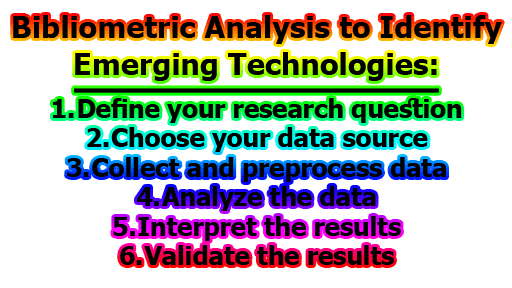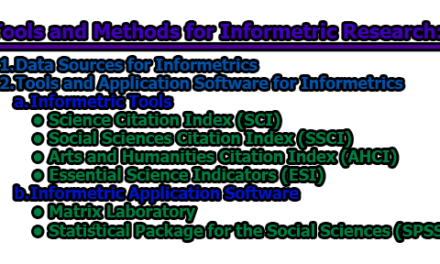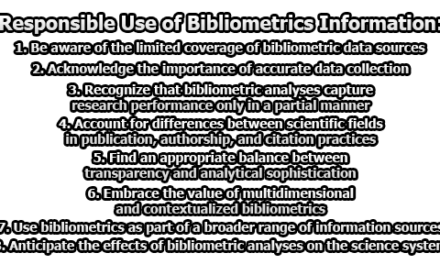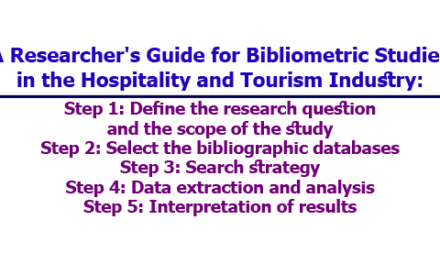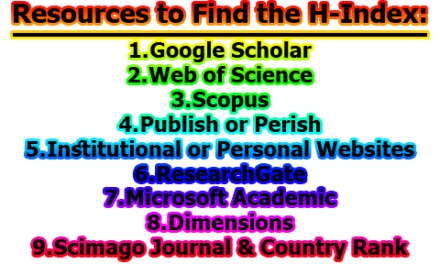Bibliometric Analysis to Identify Emerging Technologies:
In today’s world, technology is constantly evolving and advancing. As new technologies emerge, it is essential to identify them early on so that businesses can adapt to these changes and stay ahead of their competitors. Bibliometric analysis is a powerful tool for identifying emerging technologies by analyzing the publication and citation patterns of academic literature. This article will discuss bibliometric analysis to identify emerging technologies.
Bibliometric Analysis:
Bibliometric analysis is a quantitative research method that involves analyzing the literature in a particular field of study. It involves analyzing the publication and citation patterns of academic literature to identify the most important authors, institutions, and research topics. Bibliometric analysis is commonly used in science and technology fields to identify emerging technologies and to track research trends.
Bibliometric analysis can be performed using various metrics, including citation counts, co-citation analysis, and keyword analysis. Citation counts involve counting the number of times a particular paper or author is cited in the literature. Co-citation analysis involves analyzing the relationships between papers based on the frequency with which they are cited together. Keyword analysis involves identifying the most frequently used words or phrases in the literature.
Identifying Emerging Technologies:
Here are some steps you can take to use bibliometric analysis to identify emerging technologies:
- Define your research question: Before starting any analysis, you need to define the research question that you want to answer. For example, you may want to identify emerging technologies in a specific field such as renewable energy or artificial intelligence.
- Choose your data source: Depending on your research question, you may need to choose different data sources. For example, if you want to identify emerging technologies in renewable energy, you may need to use scientific publications from journals and conferences in this field.
- Collect and preprocess data: Collect the data from the selected data sources and preprocess it. This may involve cleaning the data, removing duplicates, and normalizing the data.
- Analyze the data: Use bibliometric analysis techniques such as co-citation analysis, bibliographic coupling, and co-occurrence analysis to identify the most influential papers, authors, and journals in your field of interest. You can also use clustering algorithms to group similar technologies or research areas.
- Interpret the results: Once you have analyzed the data, you can interpret the results to identify emerging technologies in your field of interest. Look for clusters of related research areas that are growing in popularity and have a high number of publications and citations.
- Validate the results: Finally, validate the results of your analysis by comparing them with other sources of information such as industry reports or expert opinions.
Bibliometric analysis can be used to identify emerging technologies by analyzing the publication and citation patterns of academic literature in a particular field. Emerging technologies are characterized by a rapid increase in the number of publications and citations over a relatively short period. By identifying these patterns, bibliometric analysis can be used to identify emerging technologies.
One example of an emerging technology that was identified using bibliometric analysis is blockchain. Blockchain is a decentralized digital ledger that is used to record transactions. Bibliometric analysis of the literature on blockchain showed a rapid increase in the number of publications and citations in the mid-2010s, indicating that blockchain was an emerging technology. This analysis allowed businesses to identify the potential of blockchain early on and to develop strategies for incorporating it into their operations.
Another example of an emerging technology that was identified using bibliometric analysis is artificial intelligence (AI). AI is a field of computer science that focuses on the development of intelligent machines that can perform tasks that typically require human intelligence, such as visual perception, speech recognition, and decision-making. Bibliometric analysis of the literature on AI showed a rapid increase in the number of publications and citations in the early 2010s, indicating that AI was an emerging technology. This analysis allowed businesses to identify the potential of AI early on and to develop strategies for incorporating it into their operations.
From the above discussion, we can say that bibliometric analysis is a powerful tool for identifying emerging technologies. By analyzing the publication and citation patterns of academic literature, bibliometric analysis can be used to identify the most important authors, institutions, and research topics in a particular field of study. This analysis can be used to identify emerging technologies by identifying patterns of rapid growth in the number of publications and citations. By identifying emerging technologies early on, businesses can develop strategies for incorporating these technologies into their operations and stay ahead of their competitors.
References:
- Glänzel, W. (2003). Bibliometrics as a Research Field: A Course on Theory and Application of Bibliometric Indicators. Retrieved from https://biblio.ugent.be/publication/224798/file/224846.pdf
- Thelwall, M. (2018). Bibliometrics to Webometrics. Journal of Information Science, 44(4), 604–619. https://doi.org/10.1177/0165551518768839
- Chen, Y., & Dubin, R. (2009). Emerging Technologies: Bibliometric Analysis of Nano/Bio-info-cogno Convergence. Journal of Convergence Information Technology, 4(4), 1–7.
- Chen, C. (2017). Science mapping: A systematic review of the literature. Journal of Data and Information Science, 2(2), 1-40.
- Wang, Y., & Chen, C. (2014). Bibliometric analysis of emerging technologies: Studying the nano-enabled drug delivery literature. Journal of Nanoparticle Research, 16(4), 1–16. https://doi.org/10.1007/s11051-014-2353-3
- Wang, Y., & Guo, Y. (2018). Emerging technologies identification using patent bibliometric analysis. Journal of Data and Information Science, 3(4), 54-66.
- Zhang, L., & Rousseau, R. (2017). Bibliometric analysis of blockchain research. Scientometrics, 112(1), 379–400. https://doi.org/10.1007/s11192-017-2352-0
- Alavi, M., & Leidner, D. E. (2001). Review: Knowledge Management and Knowledge Management Systems: Conceptual Foundations and Research Issues. MIS Quarterly, 25(1), 107–136. https://doi.org/10.2307/3250961
- Porter, A. L., & Youtie, J. (2016). Using patent analysis for technical intelligence. World Patent Information, 47, 3-12.
- Rafols, I., & Meyer, M. (2010). Diversity and network coherence as indicators of interdisciplinarity: case studies in bionanoscience. Scientometrics, 82(2), 263-287.
- Small, H. (1973). Co-citation in the scientific literature: A new measure of the relationship between two documents. Journal of the American Society for Information Science, 24(4), 265-269.
- Wu, J., Li, H., Li, J., Li, L., & Liang, S. (2017). Emerging trends and new developments in information science: A document co-citation analysis (2009–2016). Scientometrics, 111(1), 365-386.

Assistant Teacher at Zinzira Pir Mohammad Pilot School and College

